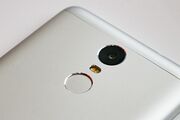Electronic fingerprint recognition
Fingerprint scanners are security systems of biometrics. They are now used in police stations, security industries and most recently, on computers.
Everyone has marks on their fingers. They can not be removed or changed. These marks have a pattern and this pattern is called the fingerprint. Every fingerprint is special, and different from any other in the world. Because there are countless combinations, fingerprints have become an ideal means of identification.
Types of fingerprint scanners
There are four types of fingerprint scanner: the optical scanner, the capacitance scanner, the ultrasonic scanner, and the thermal scanner. The basic function of these three types of scanners is to get an image of a person’s fingerprint and find a match for this print in the database. The capacitance scanner is better, because the images are more exact and precise. Scanners are used for scanning.
- Optical scanners take a visual image of the fingerprint using a digital camera.
- Capacitive or CMOS scanners use capacitors and thus electrical current to form an image of the fingerprint.
- Ultrasound fingerprint scanners use high frequency sound waves to penetrate the epidermal (outer) layer of the skin.
- Thermal scanners sense the temperature differences on the contact surface, in between fingerprint ridges and valleys.
Construction forms

There are two construction forms: the stagnant and the moving fingerprint scanner.
- Stagnant: The finger must be dragged over the small scanning area. This is cheaper and less reliable than the moving form. The image is not very good when the finger is not regularly dragged over the scanning area.
- Moving: The finger lies on the scanning area, while the scanner runs underneath. Because the scanner runs regularly over the fingerprint, the images are better.
This article does not cite any external source. HandWiki requires at least one external source. See citing external sources. (2021) (Learn how and when to remove this template message) |


